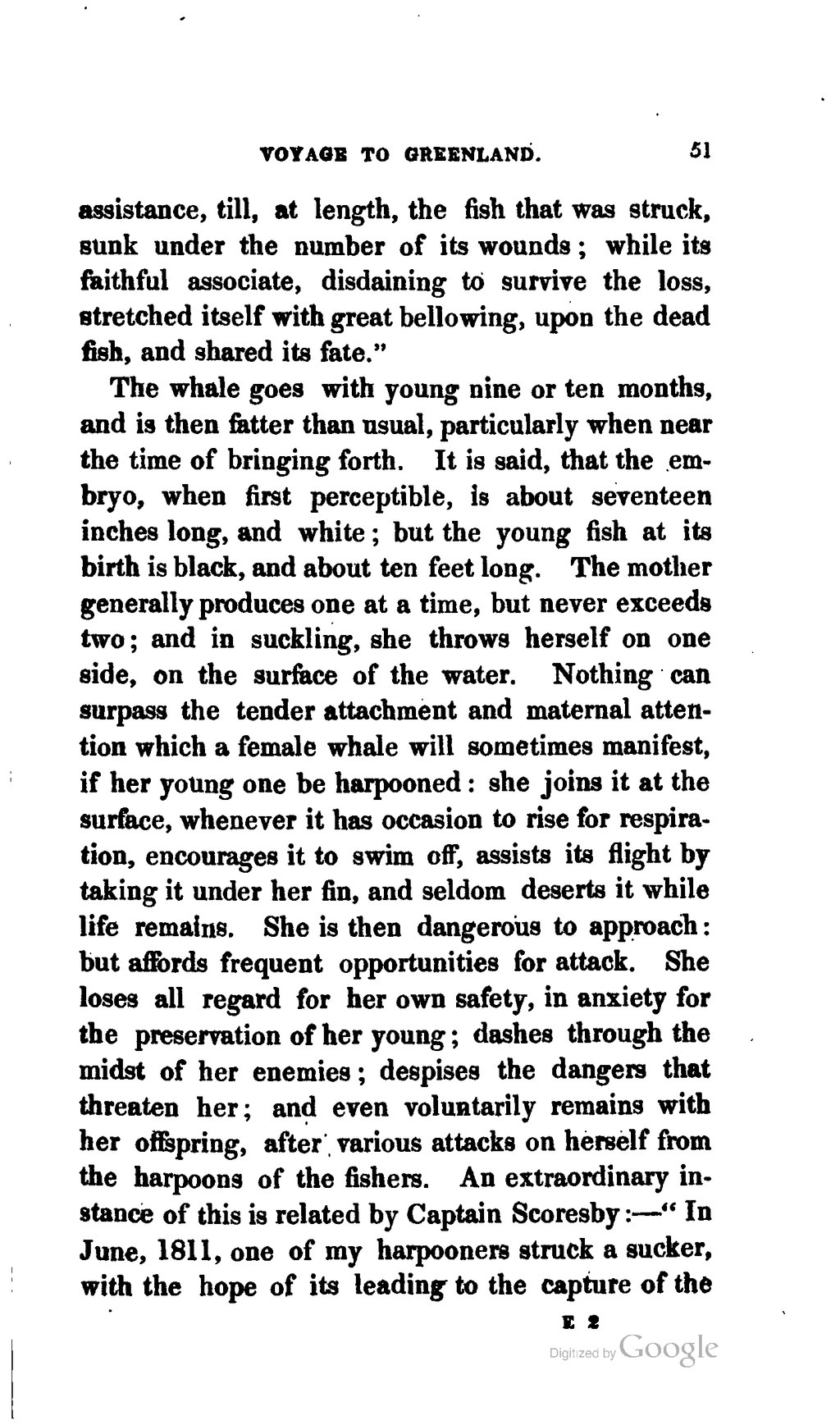assistance, till, at length, the fish that was struck, sunk under the number of its wounds; while its faithful associate, disdaining to survive the loss, stretched itself with great bellowing, upon the dead fish, and shared its fate."
The whale goes with young nine or ten months, and is then fatter than usual, particularly when near the time of bringing forth. It is said, that the embryo, when first perceptible, is about seventeen inches long, and white; but the young fish at its birth is black, and about ten feet long. The mother generally produces one at a time, but never exceeds two; and in suckling, she throws herself on one side, on the surface of the water. Nothing can surpass the tender attachment and maternal attention which a female whale will sometimes manifest, if her young one be harpooned: she joins it at the surface, whenever it has occasion to rise for respiration, encourages it to swim off, assists its flight by taking it under her fin, and seldom deserts it while life remains. She is then dangerous to approach: but affords frequent opportunities for attack. She loses all regard for her own safety, in anxiety for the preservation of her young; dashes through the midst of her enemies; despises the dangers that threaten her; and even voluntarily remains with her offspring, after various attacks on herself from the harpoons of the fishers. An extraordinary instance of this is related by Captain Scoresby:—"In June, 1811, one of my harpooners struck a sucker, with the hope of its leading to the capture of the
